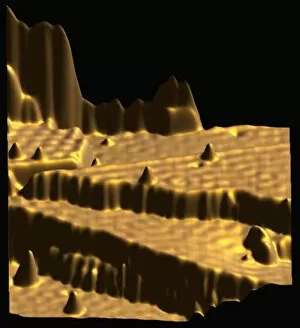Single Spin Defect Collection
"Exploring the Intricacies of Spintronics Research
For sale as Licensed Images
Choose your image, Select your licence and Download the media
"Exploring the Intricacies of Spintronics Research: Unraveling the Single Spin Defect with STM" Spintronics research has opened up a fascinating realm of possibilities in the field of nanotechnology. Among its many intriguing aspects, one particular area that scientists are delving into is the study of single spin defects. These minute imperfections hold immense potential for revolutionizing electronic devices and information storage. Using Scanning Tunneling Microscopy (STM), researchers are able to delve deep into the world of atoms and manipulate their spins at an individual level. By understanding and controlling these single spin defects, scientists aim to enhance data processing capabilities, improve energy efficiency, and develop ultra-sensitive sensors. The intricate nature of this research lies in harnessing quantum properties such as electron spins - tiny magnetic moments associated with particles. Through precise manipulation using STM techniques, scientists can isolate specific atoms or molecules on surfaces and observe their behavior under varying conditions. By studying how these single spin defects interact with neighboring atoms or external stimuli like light or temperature changes, researchers hope to unlock new ways to control information flow within electronic circuits. This could potentially lead to faster computing speeds, increased memory capacity, and more efficient energy consumption. Furthermore, exploring single spin defects offers insights into fundamental physics principles governing magnetism at atomic scales. Understanding these phenomena not only expands our knowledge but also paves the way for breakthroughs in various fields including quantum computing and advanced materials design. As we continue unraveling the mysteries surrounding single spin defects through extensive Spintronics research aided by STM technology, we inch closer towards a future where electronics operate on an entirely different paradigm – one that relies on harnessing individual spins rather than traditional charge-based systems. The potential applications are vast; from ultra-secure communication networks to highly sensitive medical diagnostics - all made possible by mastering this elusive aspect of nanoscale science.

